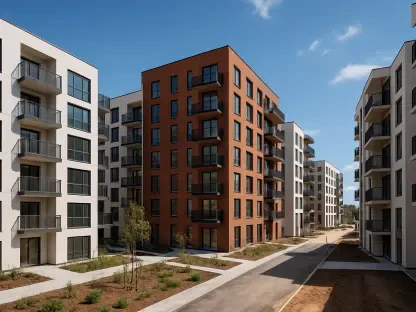In the rapidly evolving labor landscape of 2025 in Quebec, Canada, the residential construction sector finds itself at the center of a considerable labor dispute with profound implications for the industry and the broader economy. This dispute has been thrust into the public spotlight due to its involvement of a large number of workers and potential ramifications on the housing market. As the province’s construction workers strike for higher wages, the repercussions are rippling across the economic and social fabric of the region. Represented by an alliance of five unions, the striking workers encompass about 200,000 individuals, focusing specifically on those engaged in residential projects. The strike was initiated after failed salary negotiations between the union representatives and employers, particularly the Association des professionnels de la construction et de l’habitation du Quebec. This article delves into the roots of this industrial action, examining the parties’ motivations, overarching labor trends, and the broader significance for Quebec’s economic future.
Negotiations and Discontent
At the heart of the standoff are salary increments, an issue that has become an enduring theme in labor relations across various sectors. The negotiations between the construction unions and employers faltered despite persistent efforts, anchored in diverging views on reasonable wage growth. The employers proposed an 18 percent raise over four years, which the unions found inadequate given inflation and increased living costs. The union’s counter-demands were significantly higher: a 22 percent increase for workers on five-to-six story buildings and 24.3 percent for those on smaller projects. This disparity in proposals exemplifies the crux of the deadlock, making it a substantial point of contention. The wider public discussions underscore the narrative of labor rights and fair compensation, echoing throughout North America. Within the framework of this extended stalemate, both sides grapple with economic constraints and expectations. The unions argue that the proposed hikes do not correspond appropriately with the profits reaped by the residential construction industry. Meanwhile, the Association contends that their offer aligns with market realities and budget capabilities, striving to maintain operational sustainability.
Broader Labor Movements and Trends
Across various industries, calls for fair compensation and improved working conditions have become a resonant movement, setting the stage for the ongoing strike in Quebec. This trend aligns with labor movements emerging in other regions, spurred by the rising cost of living and inflationary pressures. The drive for higher wages reflects a broader sentiment shared across North American labor markets. In the Quebec construction sector, this push encapsulates the struggle of blue-collar workers to secure livelihoods that mirror economic realities and industry growth. The journey towards wage amplification represents a larger struggle to recalibrate the balance between labor inputs and financial outputs in a competitive market. As inflation and cost of living continue to rise, demands for proportional wage increases emerge as not just economic but also ethical imperatives for labor unions, reflecting a concerted effort to enhance worker welfare and rights. This resurgence in labor activism highlights the reinvigorated role of unions in an evolving economic landscape, emphasizing their part in advocating for substantial improvements in employee compensation, conditions, and overall job satisfaction.
Economic Ramifications and Perspectives
The ramifications of the construction strike extend beyond immediate wage disputes, touching upon wider economic and societal facets within Quebec’s framework. The fallout from this standoff threatens potential upheavals in the housing market and labor dynamics. Housing projects may see delays or increased costs if the strike extends, affecting both supply and demand dynamics. Moreover, as the negotiations stagnate, there’s a risk of long-term impacts on employment relations and future labor agreements, with potential ripple effects on how other sectors navigate similar standoffs. From the employer’s viewpoint, maintaining a competitive edge is crucial. They argue this requires balancing wage increases with their economic limitations to sustain profitability and market presence. However, from the union’s perspective, achieving alignments in wages signifies equitable treatment and acknowledgment of their contribution to the industry’s well-being. Thus, the strike serves as a focal point in analyzing broader issues of labor rights, economic trade-offs, and social justice within the contemporary employment framework in Quebec.
Long-term Implications and Conclusions
In Quebec’s rapidly changing labor landscape of 2025, the residential construction sector faces a significant labor dispute, deeply affecting both the industry and the wider economy. This clash has gained public attention due to the involvement of a large workforce and its potential impact on the housing market. As construction workers in the province strike for better pay, the consequences spread throughout the region’s economic and social systems. Represented by a coalition of five unions, the striking individuals include around 200,000 residential construction workers. The strike was sparked by unsuccessful salary negotiations between union leaders and employer representatives, notably the Association des professionnels de la construction et de l’habitation du Quebec. This situation highlights deeper issues, exploring the motivations of those involved, prevalent labor trends, and what it means for Quebec’s economic future, underscoring the critical challenges faced amid an evolving labor environment.









